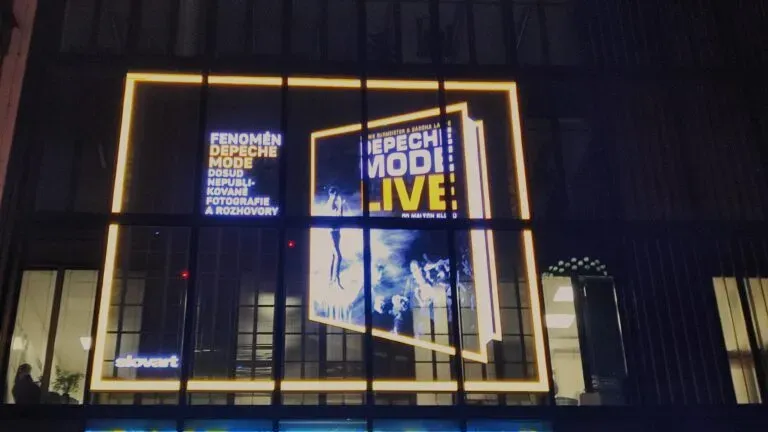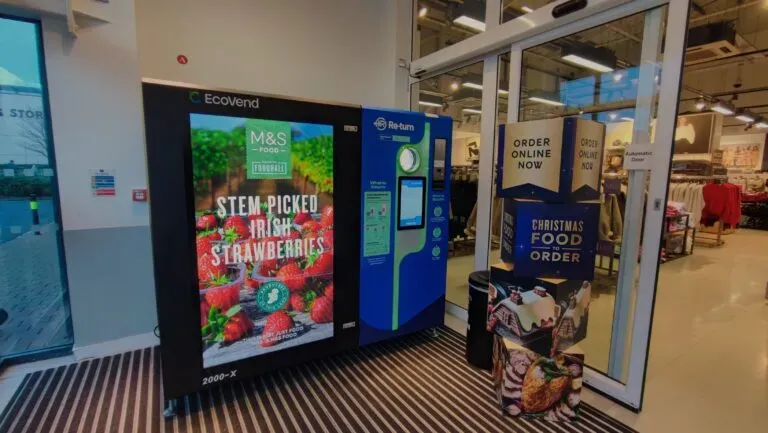5 steps to placing outdoor advertising
Outdoor advertising remains one of the most influential tools in the marketing arsenal.
It captures attention, expands reach, and helps shape a brand’s image. In this article, we will go step by step through the process of placing outdoor advertising—from planning to analyzing results.
Step 1: Planning
Planning is a key stage of a successful advertising campaign. It is important to determine the main parameters and objectives:
– Advertising goal: Define what exactly you want to achieve. This could be increasing brand awareness, attracting new customers, promoting a new product, or boosting sales.
– Target audience: Research who your ideal customer is. What are their interests, needs, and habits? Where do they spend the most time? What communication channels do they use? This will help you choose the optimal type of advertising.
– Budget: Set the budget for the advertising campaign. The cost of outdoor advertising can vary significantly depending on the placement location, size, and format.
– Type of outdoor advertising: Choose the appropriate format based on your goals and budget. This could be billboards, transit advertising, LED screens, or DOOH (Digital Out-of-Home) — digital advertising displays.
If you are planning digital outdoor advertising (DOOH or pDOOH – programmatic DOOH), it is important to consider the software that manages the content, such as a digital signage player or video wall software.
Step 2: Design creation
The next step is developing the design of your advertisement. It is important to consider several aspects:
– Message clarity: The advertising message should be short and clear, as most people will only have a few seconds to perceive it.
– Brand visibility: The logo, brand identity, and colors should be highly noticeable.
– Bright design: Large images, contrasting colors, and concise elements will help attract attention.
– Relevance to brand and audience: The design and content of the ad should align with your brand’s style and be appealing to the target audience.
With digital signage, you can create dynamic content that changes depending on the time of day, weather, or consumer behavior. This makes advertising more effective and interactive.
Step 3: Placing outdoor advertising with audience location in mind
Choosing the right location for outdoor advertising can significantly increase its effectiveness. Here are the key factors to consider:
– Visibility. The advertisement should be placed where it is easy to notice. The best locations include areas with high pedestrian or vehicle traffic, as well as waiting zones—bus stops, train stations, and airports. LED billboards are popular since they allow for dynamic content display and attract more attention.
– Demographics. It is important that the location matches your target audience. For example, advertising a youth brand will be more effective near universities, coffee shops, or shopping centers, while premium products are better promoted in business districts or near luxury residential complexes.
– Context relevance. The advertisement should blend harmoniously with its surroundings. For instance, promoting sportswear in an office district may be less effective than near fitness clubs or stadiums.
Step 4: Installing outdoor advertising
After selecting the location and approving the design, the next stage is installing the advertising structure. Key aspects to consider:
– Legal aspects. In many cases, a permit from local authorities or property owners is required. This is especially relevant for large-format structures and digital advertising screens.
– Professional installation. The setup should be carried out by specialists to ensure the structure’s durability and safety. For digital advertising displays, a crucial aspect is also configuring DOOH software to ensure proper content playback.
– Durability and maintenance. The structure must withstand weather conditions such as strong winds, rain, and snow. For electronic displays, regular equipment checks and content updates are necessary.
Step 5: Monitoring and analyzing effectiveness
Once the outdoor advertisement is installed, it is important not just to wait for results but to actively track its effectiveness. This helps determine how well the advertisement is working and whether adjustments are needed.
– Tracking results. Depending on the format of the advertisement, different evaluation methods can be used. If it is a traditional billboard or banner, it is worth monitoring sales changes in the region and analyzing customer inquiries and behavior. For video ads on digital displays, detailed statistics can be gathered on the number of impressions, viewing time slots, and even audience reactions.
– Effectiveness evaluation. The collected data should be analyzed and compared with the campaign’s initial goals. For example, if the main goal was to increase brand awareness, it is possible to assess growth in search queries or social media activity. It is also important to calculate ROI (return on investment) to understand whether the advertising expenses are justified.
– Campaign optimization. Analyzing results helps improve future advertising strategies. If the ad did not produce the expected effect, consider changing its format, design, or placement. For digital displays, content can be quickly adjusted via a digital signage player, adapting it to specific times of the day or events.
Mistakes in placing outdoor advertising
Despite the obvious advantages of outdoor advertising, many entrepreneurs make common mistakes that reduce campaign effectiveness:
– Random location selection. Advertising is often placed without deep analysis—just where it seems like a “good spot.” However, without considering the target audience and its habits, the ad may turn out to be ineffective.
– Lack of analytics. Many do not track campaign results and therefore do not understand whether the ad is working or not. This is especially true for offline advertising, where it is harder to assess its impact on sales without additional marketing research.
– Weak design and unsuccessful content. If the ad does not attract attention or its message is unclear, it simply does not work. This applies to both static images and video content.
A proper approach to placing outdoor advertising can significantly improve its effectiveness. Thanks to modern technologies such as Digital Out Of Home (DOOH), it is possible to create interactive and dynamic content tailored to different audiences. The key is to clearly understand your target audience, carefully plan the campaign, and use tools to analyze results.
Why should you turn to an advertising agency?
Placing outdoor advertising on your own may seem like a good idea, but in practice, it comes with a number of challenges. Here are several reasons why it is better to trust professionals:
– Lack of marketing expertise. If you are not a marketer, you risk incorrectly determining the location, design, or audience. Even in-house marketers often lack experience specifically in outdoor advertising.
– High costs of direct cooperation with advertising space owners. Space owners often offer agencies special discounts, whereas individual clients may face significantly higher prices.
– Lack of effectiveness analytics. Evaluating the success of an advertising campaign without the right tools is quite difficult.
– Placement queue. Popular advertising spaces can be booked months in advance, and without direct contacts, it is hard to find the best location for your campaign.
– High costs of testing. Self-placement involves significant expenses on experiments—changing the design, testing different formats and locations.
If you have enough time, a large budget, a marketing education, experience, and connections with top advertising space owners, you can try handling it yourself. But in most cases, it is more effective to turn to professionals.
How to evaluate the effectiveness of outdoor advertising?
Statistics is an exact science. If the advertisement works, the number of inquiries to the company increases over time, and sales go up. However, there are other ways to assess effectiveness. One key indicator is increased interest in the brand. This can be tracked by the growth of search queries on Google, mentions on social media, and overall brand recognition.
Even at the planning stage, the potential audience is analyzed. The main evaluation factors include:
– Reach of potential customers. This is the ratio of the number of people who see the advertisement to the total solvent population, expressed as a percentage.
– Location footfall. It is important to determine how many people see the advertising medium throughout the day. Three main flows are considered:
– Pedestrians. People passing by the advertising medium.
– Drivers. They may notice the ad, but only if it is placed in the right location.
– Passengers. Their flow is assessed using specific coefficients, taking into account the average number of people in public and private transport.
Key metrics for outdoor advertising effectiveness
One of the main evaluation metrics is OTS (opportunity to see), which refers to the likelihood of seeing the advertisement. It is determined based on the characteristics of the advertising medium:
– Viewing angle. The angle from which the advertisement is visible from key viewing points is important.
– Positioning relative to traffic intersections. Ads placed at intersections where drivers have to stop tend to perform better.
– Distance from traffic lights. The closer the ad is to a stopping point, the more time people have to view it.
– Number of lanes and traffic speed. On multi-lane roads with high-speed traffic, drivers may not have enough time to notice the ad.
– Image quality. Text and graphics should be legible even from a long distance. Digital screens allow for clear, high-resolution images, making ads more effective.
– Competition. Nearby advertisements may reduce attention to your ad.
– Obstructions. Trees, road signs, and buildings can partially block the view of the ad medium.
Today, thanks to technological devices such as Wi-Fi sensors, the number of interactions with DOOH advertising media can be counted automatically. Leading global advertising operators, such as JCDecaux, are already implementing these technologies.
New technologies for enhancing outdoor advertising effectiveness
Traditional billboards are gradually giving way to digital solutions. The use of DOOH networks enables the broadcast of adaptive content in real-time, significantly increasing the effectiveness of advertising campaigns.
To efficiently manage digital advertising spaces, specialized software for LED screens is required. It allows advertisers to:
– Automatically change content depending on the time of day or weather conditions
– Analyze ad impressions and the number of unique views
– Integrate advertisements with other digital channels
– Connect analytics tools to evaluate campaign effectiveness in real-time
Thanks to modern DOOH Display Solutions, advertisers gain more flexible campaign management and improved efficiency. This enables the creation of dynamic, personalized ads that adapt to road conditions or audience interests.
What affects the effectiveness of outdoor advertising?
A single glance at a billboard or its layout allows a specialist to assess whether the campaign will achieve its goal. The science of creating signage for outdoor advertising has its nuances. Therefore, it is best to turn to an advertising agency that not only places ads but also handles all preparatory work.
The fundamental rules include:
– Placing billboards along busy highways and near high-traffic areas such as stores and cultural or entertainment centers.
– The sign should not be overloaded with product information; its purpose is to make the brand recognizable or remind potential customers about a service, product, or location where they can order or obtain it.
– If new product information needs to be conveyed, the text should be short and concise.
– A billboard should contain no more than seven words, all of which must be easily readable at a glance.
– Ornate fonts are unacceptable for an informational sign unless they are part of a recognizable trademark. In practice, the text should be easily readable from 40 meters ±10.
With the advancement of digital technologies, outdoor advertising is reaching a new level. DOOH (Digital Out-of-Home) advertising allows for the broadcast of dynamic content, adapting it to the audience and external conditions. This increases reach and engagement among potential customers. Additionally, the use of centralized video management systems enables rapid updates of advertising materials across dozens or even hundreds of screens simultaneously, ensuring relevance and personalization of advertising campaigns.
Advision — Content Management System for remote management and media planning of video and audio content broadcast. We help offline businesses and advertising companies automate workflows and implement reliable Digital Signage infrastructure using our own software and hardware solutions.
Contact us and we will help you implement the most modern technologies to solve your problems!
Share the news




















